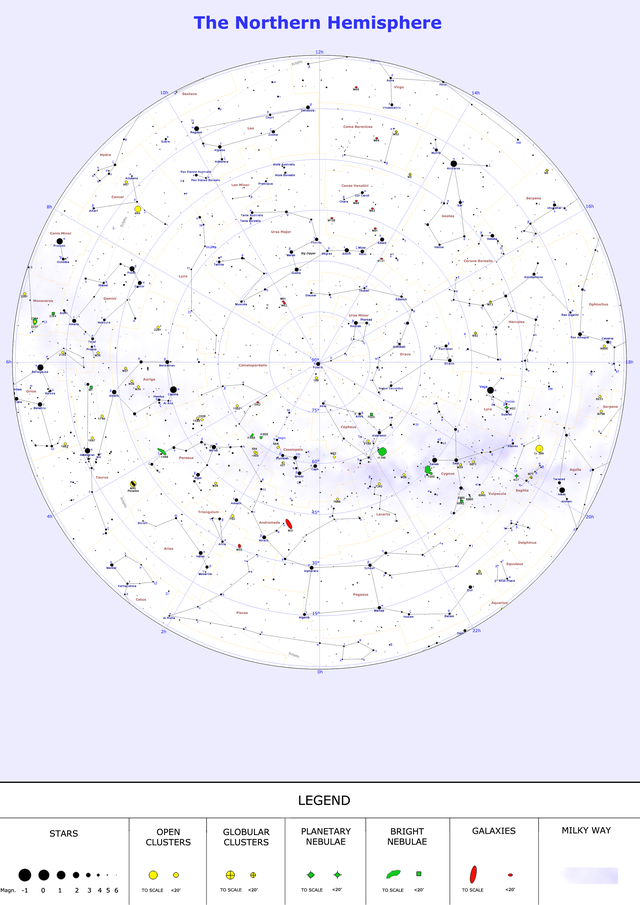Top Qs
Timeline
Chat
Perspective
Northern celestial hemisphere
Northern half of the celestial sphere From Wikipedia, the free encyclopedia
Remove ads
The northern celestial hemisphere, also called the Northern Sky, is the northern half of the celestial sphere; that is, it lies north of the celestial equator. This arbitrary sphere appears to rotate westward around a polar axis due to Earth's rotation.
This article needs additional citations for verification. (February 2024) |

At any given time, the entire Northern Sky is visible from the geographic North Pole, while less of the hemisphere is visible the farther south the observer is located. The southern counterpart is the southern celestial hemisphere.
Remove ads
Astronomy
In the context of astronomical discussions or writing about celestial cartography, the northern celestial hemisphere may be referred to as the Northern Hemisphere.
For celestial mapping, astronomers may conceive the sky like the inside of a sphere divided into two halves by the celestial equator. The Northern Sky or Northern Hemisphere is therefore the half of the celestial sphere that is north of the celestial equator. Even if this geocentric model is the ideal projection of the terrestrial equator onto the imaginary celestial sphere, the northern and southern celestial hemispheres are not to be confused with descriptions of the terrestrial hemispheres of Earth itself.
Remove ads
Observation

Of the modern 88 constellations, 43 lie predominantly within the northern celestial hemisphere, with 28 completely on the northern hemisphere. The other 14 constellations (Aquarius, Aquila, Canis Minor, Cetus, Hydra, Leo, Monoceros, Ophiuchus, Orion, Pisces, Serpens, Sextans, Taurus, and Virgo) lie in some piece on the southern hemisphere. Eridanus has some piece within the northern celestial hemisphere.[1]
- Andromeda
- Aquarius
- Aquila
- Aries
- Auriga
- Boötes
- Camelopardalis
- Cancer
- Canes Venatici
- Canis Minor
- Cassiopeia
- Cepheus
- Cetus
- Coma Berenices
- Corona Borealis
- Cygnus
- Delphinus
- Draco
- Equuleus
- Eridanus
- Gemini
- Hercules
- Hydra
- Lacerta
- Leo
- Leo Minor
- Lynx
- Lyra
- Monoceros
- Ophiuchus
- Orion
- Pegasus
- Perseus
- Pisces
- Sagitta
- Serpens
- Sextans
- Taurus
- Triangulum
- Ursa Major
- Ursa Minor
- Virgo
- Vulpecula
The pole star of the northern celestial hemisphere is Polaris, the brightest star in the constellation Ursa Minor. The brightest star in the northern celestial hemisphere is Arcturus, the fourth-brightest star in the sky, closely followed by Vega.[2]
Remove ads
References
See also
Wikiwand - on
Seamless Wikipedia browsing. On steroids.
Remove ads
